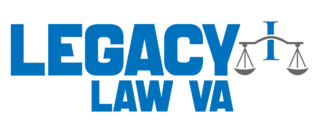The medical malpractice case process is incredibly messy. Multiple healthcare workers touch each patient. Treatment stretches across days or weeks. Complex procedures involve numerous steps where things go sideways. Patients can’t possibly sort through this maze alone to determine who screwed up. A personal injury law firm in Nashville takes on the detective work, tracking down exactly which actions hurt patients and which providers deserve blame.
Modern healthcare means armies of people involved in every case. Surgeons cut. Anesthesiologists put people under. Nurses monitor vitals. Technicians run tests. Pharmacists fill medications. When things go wrong, pinpointing the culprit takes serious digging. Nashville Personal Injury Lawyer analyze medical records, question witnesses, and use experts to determine where care went off the rails and who made the mistakes.
Identifying responsible parties
Lawyers hunt down every person and institution touching the patient’s care. Hospital corporations, private doctor offices, individual physicians, nursing personnel, and contracted specialists all might share fault. The investigation looks at:
- Which specific providers actually treated this patient when things went wrong
- What each person did that helped cause the injury
- Whether hospital rules or procedures created or worsened the problem
- If medical device manufacturers share blame for faulty equipment
- Whether pharmacies mixed up prescriptions, causing medication mistakes
Establishing care standards
Liability turns on proving treatment fell short of what’s medically acceptable. Lawyers bring in medical experts who spell out what competent doctors would’ve done in identical situations. These experts comb through charts comparing actual treatment against established protocols. Expert opinions clarify whether diagnostic foot-dragging, surgical botches, wrong medications, or inadequate monitoring violated care standards. Each medical specialty plays by different rules. Lawyers find expert witnesses matching the exact medical field at issue. Heart surgery errors need cardiologist experts. Childbirth problems require an obstetrician’s review. The matched expertise delivers authoritative takes on whether treatment measured up or fell short of specialty benchmarks.
Proving causation links
Showing that substandard care actually caused the harm separates real liability from just bad outcomes that happen sometimes. Patients occasionally suffer complications despite doctors doing everything right. Lawyers must connect the dots proving negligence specifically produced injuries rather than the underlying disease or unavoidable risks. Medical experts dissect the causal pathway linking negligent actions to resulting damage.
Causation analysis frequently means eliminating other possible explanations for injuries. Lawyers compile evidence showing injuries wouldn’t have happened without the negligent care. Reconstructing timelines demonstrates how the mistake came first and produced the harm afterwards. Expert differential diagnosis rules out other potential causes having nothing to do with provider actions.
Handling multiple defendants
Medical malpractice suits commonly rope in numerous potentially liable parties. Attorneys determine how much blame is apportioned to each defendant. The way damages are split among defendants varies across states. Some jurisdictions let plaintiffs collect full damages regardless of individual fault. Others cap recovery from each defendant at their proportional share only. Lawyers play these allocation rules strategically. They identify which defendants carry sufficient insurance or personal assets actually to pay judgments. To prevent defendants from ducking responsibility by pointing fingers at one another, cross-claims flying between defendants need defendant handling.

